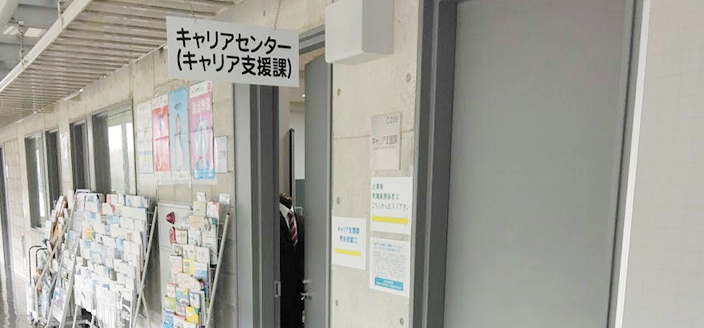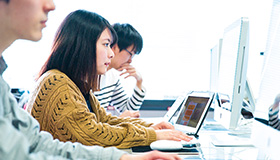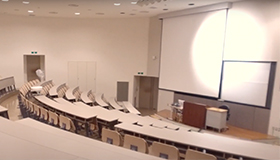Facility
information
The following is an introduction to the extensive CIST facilities.
The campus is divided into the Main Building and the Research and Experiment Building.
Building Research
Building Experiment
Building 10th Anniversary
Building Information
Building Lecture
Building
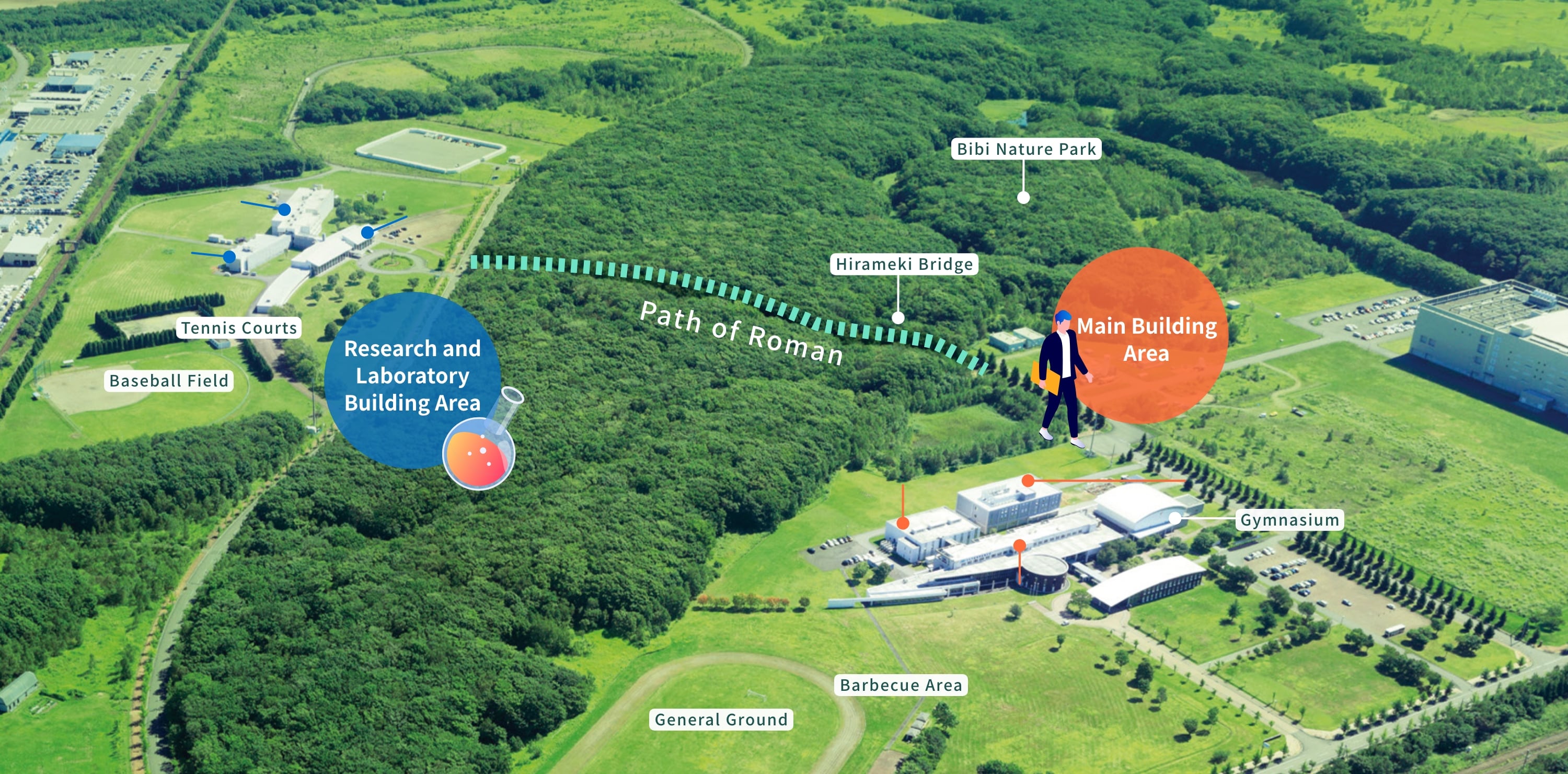
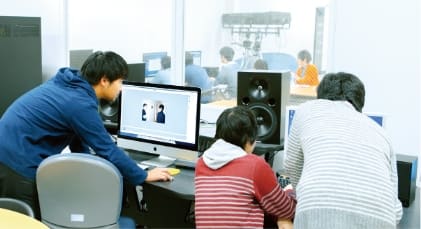
A video content workshop where professional equipment can be operated. It is used as a base for information systems and media research.
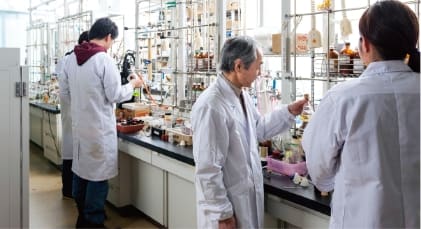
The base for faculty research activities and students’ graduation research. The facilities and other equipment differ according to the nature of the research, and each laboratory has richly distinct features.
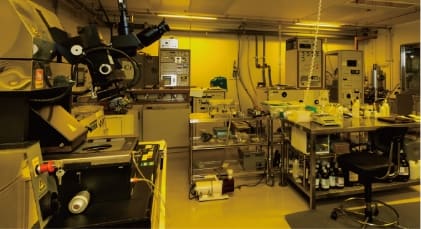
Company officials are impressed with the highly advanced research that is possible here. It is used for graduate research as well as joint research with companies.
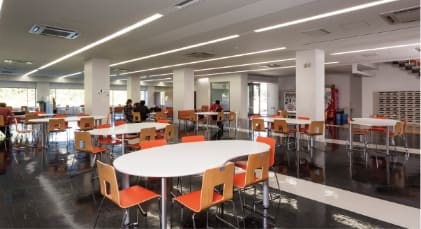
The student hall is a relaxing space. There is also a store next to the hall, and it is crowded with students during breaks.
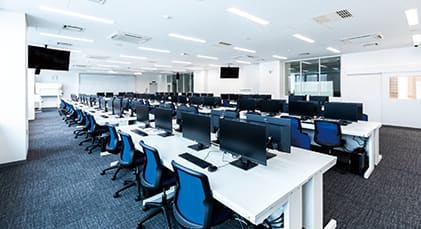
This is a classroom for computer training, providing a well-equipped environment for learning AI, data science, VR, and more.

The largest circular hall at CIST. International conferences on optical science are also held here.
The campus is divided into the Main Building and the Research and Experiment Building.
Situated in a rich natural environment, the campus consists of the Main Building with lecture rooms and a library, and the Research and Experiment Building with state-of-the-art research facilities. The Information Building, which is in use since April 2022, also includes Learning Commons and an IoT Laboratory. Please take a look at our campus video!
Main Building
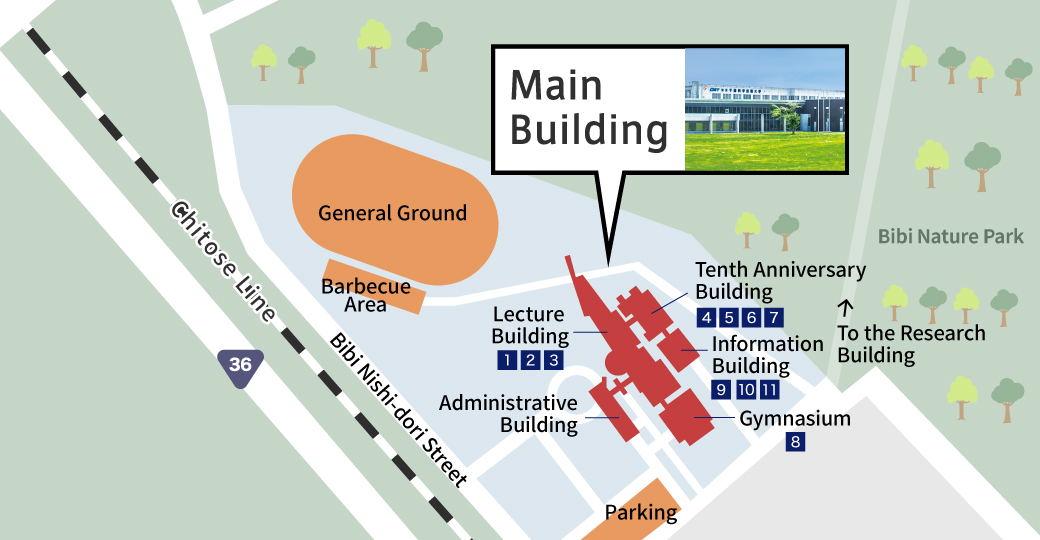
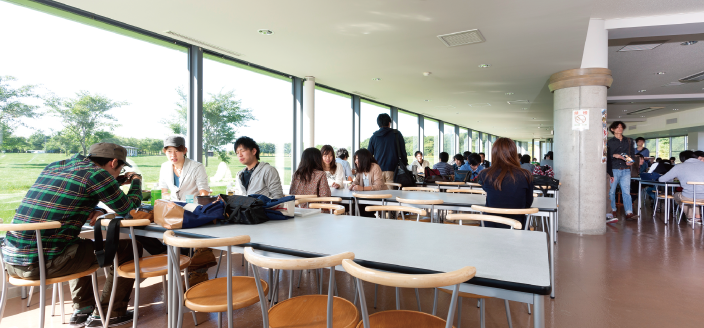
1. Cafeteria
Both the menu and the portions are substantial yet reasonably priced. This is an open spot with large, bright windows overlooking the ground and greenery.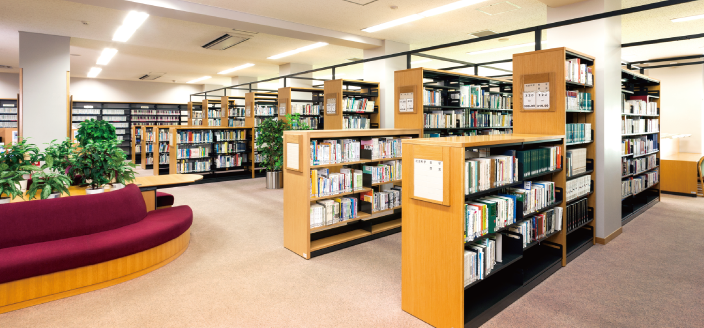
2. Library
Many students use the library to prepare for and review lectures and write reports. The AV area, where movies and other videos can be viewed, is also popular.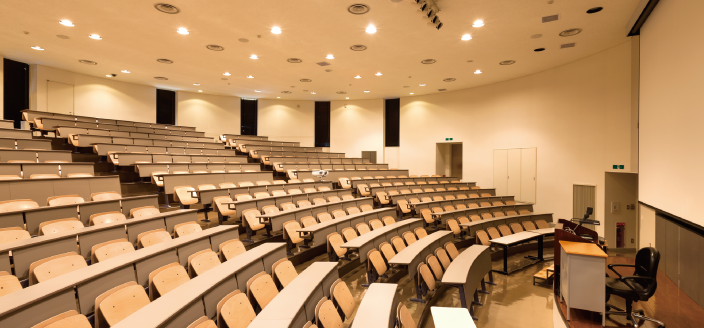
3. Main Lecture Hall
The largest circular hall in CIST. International conferences on optical science are also held here.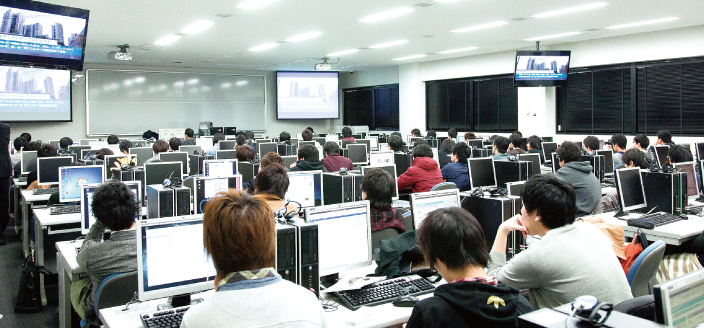
4. Computer Classrooms (10th Anniversary Building)
The two rooms are equipped with a total of 192 state-of-the-art PCs, which can be used during practical computer lectures as well as outside of lecture hours. Simultaneous remote lectures are also possible.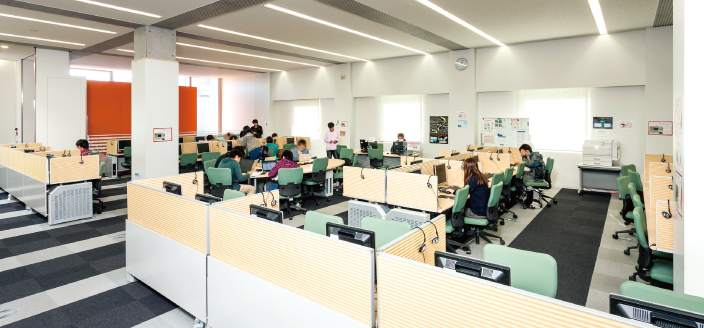
5. Learning Room
All 48 seats in the open space are equipped with the latest PCs, and e-learning materials are freely available for use at any time.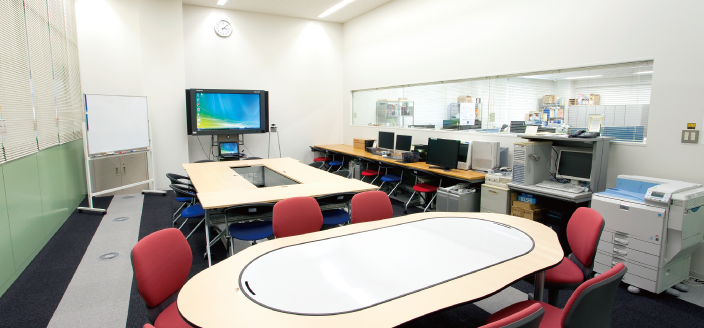
6. Project Room
This room is used exclusively for project activities such as media content production by students interested in information-related fields.
7. Student Hall
The student hall is a relaxing space. A store is also located next to the hall, which is crowded with students during breaks.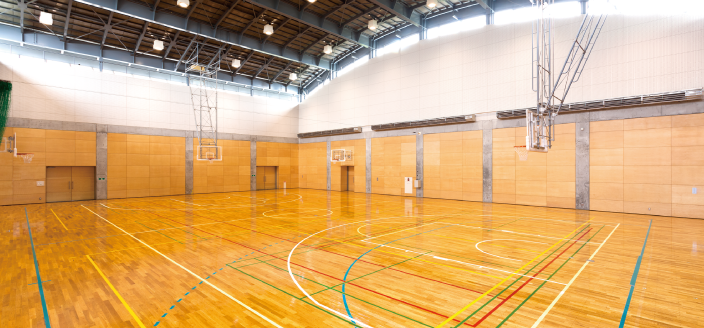
8. Gymnasium
The gymnasium is adjacent to the Main Building. Shower rooms and club rooms are also available.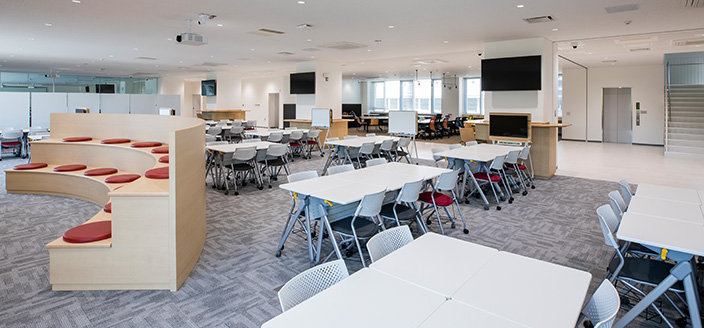
9. Learning Commons
The space is designed to enhance group work, serve as a place for students to learn independently and voluntarily, as well as a place for students to relax.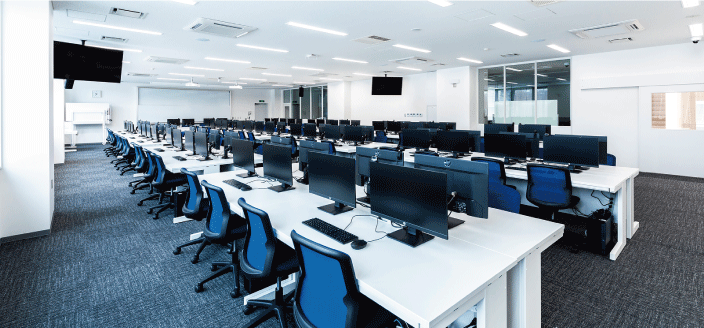
10. Computer Classroom (Information Building)
This is a classroom for practical computer training. High-spec PCs are installed and provide a sufficient environment for learning AI, data science, VR, and more.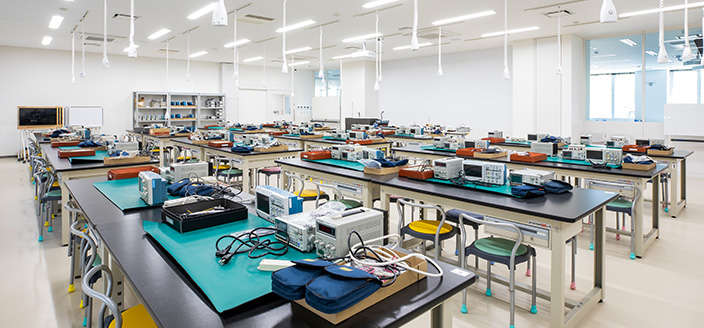
11. IoT Laboratory
The aim is not simply to give lectures on computers alone, but to also confirm through actual experiments whether created programs actually work correctly. This is a space where students can learn in a hands-on format.Research and Experiment Building
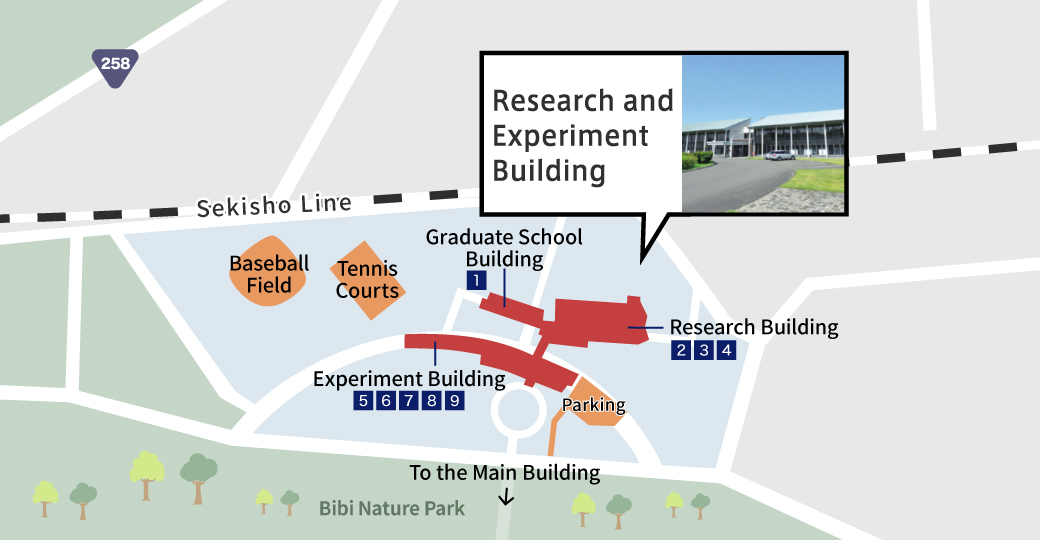

1. Studio Media Lab
A video content workshop where professional equipment can be operated. It is used as a base for next-generation information systems and media research.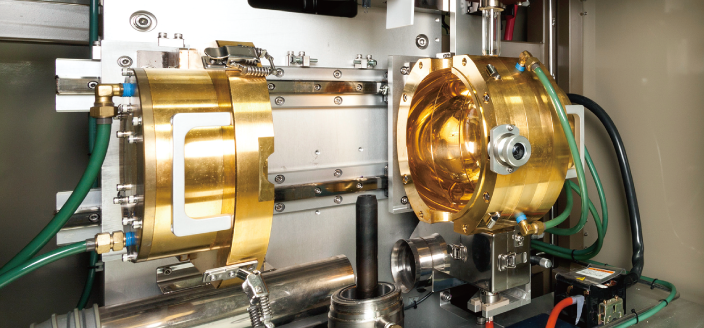
2. Crystal generator in the Microscope Room
Single crystals are produced by melting and solidifying inorganic compounds under focused light. Intermetallic compounds and ceramics can thus be produced.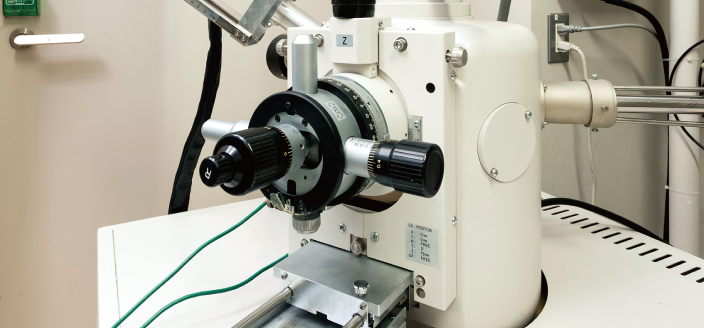
3. Scanning electron microscope in the Microscope Room
The sample surface is scanned by a convergent electron beam from an electron gun, and secondary electrons thus generated create images of surface irregularities. This allows analysis of microscopic surface structures.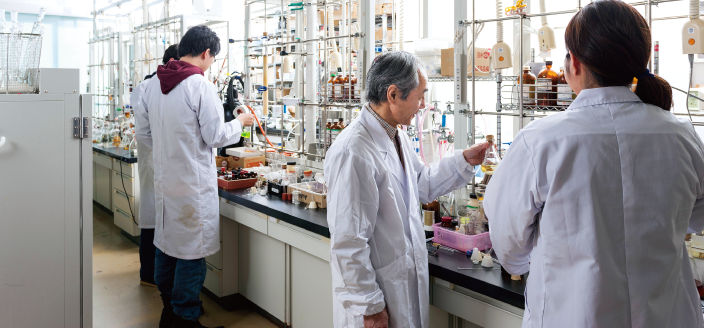
4. Laboratories 1-3F
The base of faculty research activities and students’ graduation research. The facilities and other equipment differ according to the nature of the research, and each laboratory has richly distinct features.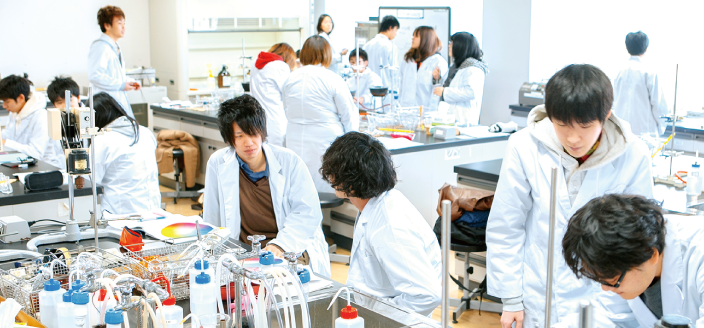
5. Student Laboratory (chemistry)
Experiments on the composition of matter and analysis of material ingredients and synthetical processes are performed.
6. Student Laboratory (physics, electronics, systems)
Experiments on optical devices, circuits, and controls are performed.
7. Laser equipment in the Shared-use Condensed Matter Laboratory
The laser equipment is freely available for graduation research and is also used for projects involving industry-government-academia collaboration.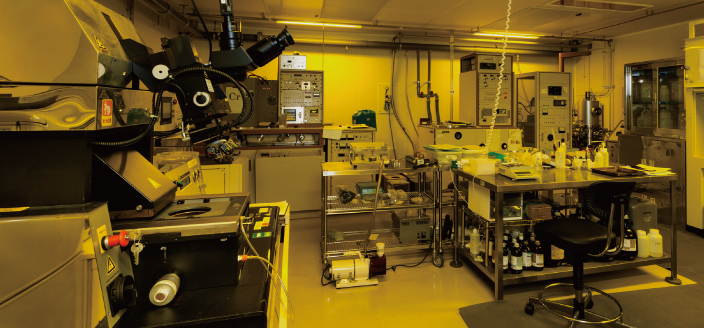
8. Cleanroom
Company officials are impressed with the highly advanced research that is possible here. It is used for graduate research as well as joint research with companies, with users dressed in dust-proof clothing.